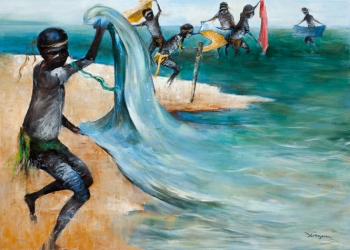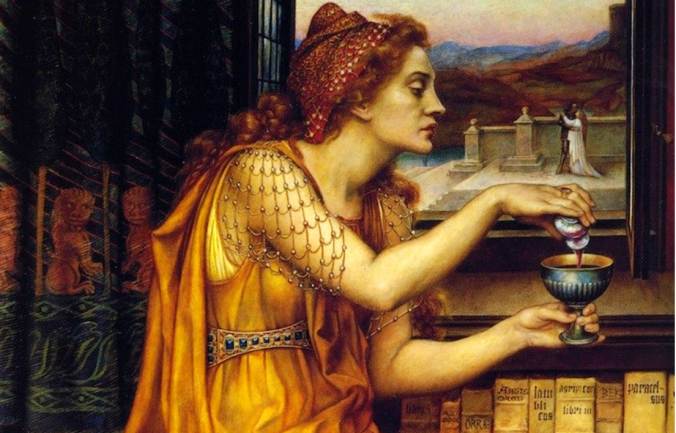
The coast of Arnhem Land, in Northern Australia – scene of first contact between Australian Aborigines and Makassan fishermen, probably some time before 1700.
 If there’s one thing that most people think they know about the early history of Australia, it’s that the continent remained suspended, in unchanging isolation, for countless thousands of years before the arrival of the convicts of the First Fleet early in 1788. Cut off from the rest of humanity ever since the end of the last Ice Age, the Aboriginal population lived on for generation after generation in a hazy, mythic stasis: a “Dreamtime” in which the passage of the years, and even the notion of history itself, had practically no meaning. Theirs was a pure, pristine existence; the first Australians were part of the land itself, rather than living off it and exploiting it. And when the British arrived and claimed the continent, they sullied an Eden, degrading the noble savages who lived in it.
If there’s one thing that most people think they know about the early history of Australia, it’s that the continent remained suspended, in unchanging isolation, for countless thousands of years before the arrival of the convicts of the First Fleet early in 1788. Cut off from the rest of humanity ever since the end of the last Ice Age, the Aboriginal population lived on for generation after generation in a hazy, mythic stasis: a “Dreamtime” in which the passage of the years, and even the notion of history itself, had practically no meaning. Theirs was a pure, pristine existence; the first Australians were part of the land itself, rather than living off it and exploiting it. And when the British arrived and claimed the continent, they sullied an Eden, degrading the noble savages who lived in it.
There is plenty that is wrong with this portrait of pre-contact Australia. It owes more to the New Age enthusiasms of the 1970s than it does to the realities of history. It lumps together hundreds of tribes, and dozens of major language groups, into one undifferentiated mass – conflating lives lived in an almost infinite variety of landscapes, from the deserts of the red centre to the lushness of the tropical north – and it perverts a rich, complex mythology, turning what we inadequately term “the dreaming” into little more than a synonym for the whole period before the days of Captain Cook. Most dangerously of all, it imposes striking limitations on the Aborigines themselves. In insisting they were pure, it makes them primitive; in sketching them as absolutely isolated, it encourages us to think of them as people so alien that they were barely capable of interacting with the rest of the world.

“The source of life.” A painting by Zhou Xiaoping, from the Melbourne Museum exhibition “Trepang: China and the story of the Macassan-Aboriginal Trade” (2010).
All this is a distortion of a less straightforward but vastly more compelling history. Australia was never entirely cut off from the rest of the world; there is evidence of frequent contact with the peoples of New Guinea and, beginning in the 17th century, there were also sporadic encounters with Dutch mariners along the western and northern coasts. Most remarkably of all, the Aboriginal peoples of the far north – what Australians today call the “Top End” – were, for several centuries at least, part of a vibrant and extensive trading system, one that brought them into annual contact with seagoing merchants from Indonesia, and linked them to civilisations as far away as China and Japan. Continue reading










